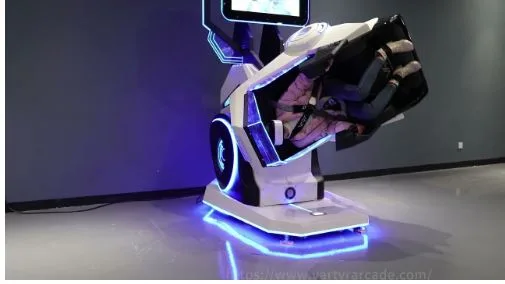How Portable Tech Is Changing Disaster Preparedness Around the World
A decade ago, disaster preparedness meant binders, broadcast alerts, and big command centers. Today, the frontline often fits in our pockets. Portable tech phones, wearables, sensors, power packs, and lightweight satellites is rewiring how communities anticipate, withstand, and recover from shocks. And it’s not hype: it’s a global shift confirmed by field practice and policy from organizations like the United Nations Office for Disaster Risk Reduction (UNDRR).
As households and responders look for dependable, renewable backup power, options like anker solar generators are becoming part of that emerging toolkit. In this guide, we explore how portable tech is reshaping disaster preparedness around the world, what’s working, where it’s fragile, and how we can build systems that are fast, fair, and resilient.
Why Portable Tech Matters In Disaster Preparedness
From Centralized Systems To Edge Readiness
Traditional preparedness relied on centralized hubs: big servers, control rooms, and one-way broadcast. We still need that backbone, but disasters don’t wait for perfect connectivity. Portable tech pushes capacity to the edge, so communities can act when the core goes down. When alerts, maps, and decision support live on devices we already carry, response begins minutes, even hours, earlier. Think of edge readiness as two things: on-device intelligence and edge networking. On-device means phones can cache maps, run hazard models, translate guidance, and display offline playbooks. Edge networking means devices mesh together, Bluetooth, Wi-Fi Direct, LoRa, or ad-hoc relays to pass messages when towers fail. Together, they reduce single points of failure. Tools people already trust on the road, like a radar detector, show how small devices can extend awareness and communication when traditional systems falter.
Speed, Redundancy, And Reach In Low-Resource Settings
Portable tech shines where infrastructure is thin. Low-cost handsets, solar power, and offline-first apps let health workers, volunteers, and local leaders operate independently. Redundancy is built-in: SMS if data fails, satellite if cell towers drop, paper QR if printers die. It’s not about perfect tech: it’s about layering simple tools so at least one path works under stress.
Crucially, portable gear scales with training. A hurricane shelter equipped with battery banks, a few wearables for triage, and a shared satellite hotspot can coordinate hundreds of people faster than a fully wired EOC did a decade ago. Speed saves lives: redundancy prevents small failures from becoming big ones.
Core Categories Of Portable Tech
Smartphones, Apps, And Mesh Messaging
Smartphones remain the Swiss Army knife of disaster preparedness. They deliver alerts, store offline maps, scan QR codes for aid distribution, and enable two-way reporting. Mesh messaging apps can relay texts device-to-device when the network is down, keeping neighborhood watch groups, CERT teams, and clinics connected.
Best practices:
- Cache critical content: evacuation maps, phone trees, medical protocols.
- Use multi-channel alerts (cell broadcast, SMS, app push, radio).
- Train on low-bandwidth modes and mesh handoffs before an event.
Wearables And Health Monitoring
Wearables track heart rate, SpO2, temperature, and movement. In shelters or field clinics, they help triage quietly and continuously. A spike in temperature across multiple wearables might flag an infection cluster: an arrhythmia alert could prompt a telemedicine consult. Rugged bands with washable straps and week-long batteries are ideal.
Portable Power: Batteries, Solar, And Hand Cranks
Power is the first dependency to fail. Portable power systems, high-capacity battery banks, foldable solar panels, and hand-crank radios, keep comms and lights alive. In practice, a layered kit works best: pocket-sized chargers for personal devices, a mid-size battery for routers and medical gear, and community solar chargers for sustained outages.
Satellite And Off‑Grid Connectivity
When terrestrial networks collapse, satellite fills the gap. Portable satellite messengers can send coordinates and short texts: backpack terminals create ad‑hoc Wi‑Fi hotspots for teams: compact dishes can move with mobile command posts. The key is pre-configuration and drills, sat links are only “instant” if keys, plans, and airtime are sorted beforehand.
Compact Sensors And Portable Drones
Low-cost environmental sensors measure water level, air quality, or structural vibration. Combined with portable gateways, they feed local dashboards even when the internet is out. Small drones map damage, identify blocked roads, and deliver first-aid kits across rivers or landslides. Importantly, we should set geofencing and privacy rules ahead of time, not in the heat of response.
Transforming Early Warning And Risk Awareness
Hyperlocal Alerts And Multilingual Delivery
Portable tech pushes warnings beyond citywide broadcasts to block-by-block specificity. Phones can receive cell broadcasts, app pushes, and even siren-triggered tones, then present instructions in a user’s preferred language. For communities with mixed literacy, we can deliver icon-based steps and short audio clips offline.
Crowdsourced Mapping And Citizen Reports
Residents are often first observers. Structured citizen reporting, photos, water-depth tags, road status, enriches situational awareness. With simple templates and GPS stamps, we can validate signals, reduce rumor, and update live maps. The trick is incentives and moderation: clear guidance on what to report, and lightweight verification to filter noise.
On‑Device AI For Hazard Detection
Phones now run models locally. That means smoke detection via camera feeds, cough pattern screening for shelters, or landslide risk estimation from terrain and rainfall tiles cached on-device. On‑device AI keeps sensitive data local, speeds inference, and works offline. But we should treat it as decision support, not ground truth: human confirmation still matters.
Enabling Response And Coordination In The Field
Rapid Damage Assessment And Mapping
Portable drones and phone cameras can generate orthomosaic maps within hours, not days. Pair that with offline GIS apps and you’ve got a rolling common operating picture. Teams mark impassable routes, collapsed structures, fuel points, and clinic status, then sync when any connectivity appears. That real-time nuance, “this bridge is passable for light trucks only”, prevents costly detours.
Triage, Telemedicine, And Portable Health Records
In mass-casualty scenarios, wristbands or QR-coded cards link to minimal health records: allergies, meds, triage scores. Clinicians update vitals by scanning with a phone, even offline: data syncs later. When specialists are remote, low-bandwidth telemedicine, store-and-forward photos, short consults, bridges gaps. It’s rarely glamorous, but it moves care to where people are.
Logistics, E‑Cash, And Identity In Emergencies
Aid flows faster when distribution is portable. Digital vouchers or e‑cash delivered to SIM-linked wallets can replace pallets of goods, reduce leakage, and give families choice. Pop-up identity workflows, offline face match or codeword plus QR, help confirm recipients without heavy bureaucracy. Every step must include fallback: paper lists, tokens, and manual overrides, because the perfect app isn’t a plan.
Equity, Ethics, And Reliability
Battery Life, Durability, And Offline‑First Design
Preparedness isn’t a product feature: it’s a constraint. Devices should last days, not hours, and survive dust, heat, and rain. Offline-first design beats fancy UI, apps must run without logins, cloud calls, or large updates. We should preload content, compress media, and expose a “low power” mode that dials back sensors and background tasks.
Privacy, Safety, And Misinformation Risks
Portable tech collects intimate data at the worst moments. We owe people restraint and transparency. Minimum viable data, short retention windows, and clear opt-outs should be defaults. For misinformation, pre-establish trusted channels: verified accounts, short links, and consistent branding. If rumors spike, push concise corrections and explain the why, not just the what.
Bridging The Digital Divide And Accessibility
Not everyone carries a smartphone, or any phone. Our plans should combine portable tech with analog backups: door-to-door runners, bulletin boards, radio. When we do rely on devices, we must design for screen readers, large text, color contrast, and voice prompts. Community training days and device libraries (shared routers, battery kits) close gaps before they matter.
Global Case Studies
Cyclone Early Warnings In Bangladesh
In coastal Bangladesh, cyclone readiness has shifted from loudspeakers alone to multi-channel alerts. Volunteers get early cell broadcasts and app pushes, then relay via megaphones and door knocks. Low-cost solar chargers keep phones alive through long, wet nights. The result: faster evacuations and fewer last-mile blind spots.
Earthquake Mesh Networks In Mexico
After major quakes, parts of Mexico have piloted mesh messaging to bridge blackouts. Neighborhood brigades pass short texts hop-by-hop, reporting building integrity and medical needs. Portable drones map damaged blocks, while rooftop radios extend range. Even when power is scarce, pocket batteries keep the mesh breathing long enough to coordinate rescues.
Wildfire Readiness In Australia And The United States
Wildfires move fast, so hyperlocal alerts and air-quality sensors matter. Households use app-based fire perimeters, particulate sensors, and go-bag checklists that work offline. Fire crews run portable repeaters and satellite hotspots to coordinate in canyons where coverage dies. Wearables help monitor firefighter exertion and heat stress, nudging rotations before exhaustion hits.
Community Flood Sensors In West Africa
Community groups along flood-prone rivers deploy DIY water-level sensors fed by small solar panels. Readings appear on village notice boards and phone dashboards. When levels rise, a simple rule, two consecutive thresholds crossed, triggers SMS trees in local languages. Portable tech augments local knowledge rather than replacing it, which is why adoption sticks.






